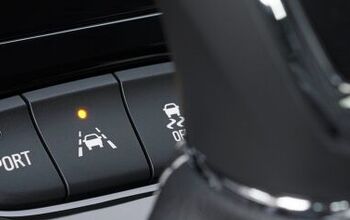Down With Safety
The Mainstream Media has a thing about safety-related stories. It started with the “if it bleeds it leads” paradigm, and has become a predictable hobbyhorse thanks to the fact that you’d have to be the worst kind of sociopath to even consider arguing against more safety. If the MSM likes anything more than trench-warfare debates, it’s coming together afterward over a hot cup of won’t someone think of the children? But facts are facts, and as the WSJ reports, driving a car has literally never been safer. There were 1.19 deaths for every 100 million vehicle miles traveled in the second quarter of 2009, the lowest number since the NHTSA began keeping statistics in the 1970s. And the IIHS’s recent gee-whiz test results don’t even tell the whole story, although they do indicate that the lobbying group may be losing some relevance. Beyond passive safety features like improved steel, engineering and airbags, active safety features like stability and traction control are preventing a great number of deaths. As are roadway improvements like rumble strips and median dividers, not to mention increased DUI and seatbelt enforcement. In short, great strides have been made. Which means it’s time to think about changing the conversation about safety. As the video above proves, we’ll never completely wring the danger out of the practice of piloting tons of metal around at speed, but the latest statistics show that it might be a good time to consider prioritizing lower vehicle weights over a safety-at-all-costs approach. After all, even the most fanatical safety advocates are now focusing on distracted driving and motorcycle deaths.
More by Edward Niedermeyer

































Comments
Join the conversation
@ Kendahl: Yes. If a slightly intoxicated driver is stuck in traffic on 410 and a San Antonio bus driver who is texting while driving slams into the back of him, it's alcohol-related.
You could turn it around and say that it's the "fault" of people who buy unnecessarily big cars. To follow the line of reasoning used so far, all of us would have to use SUVs to level the playing field when it comes to crash survivability. But then, some idiots would come up with manufacturing and buying even bigger SUVs, or perhaps modifying big trucks for personal use. SUV like that Q7 would stand no chance in a collision with a custom-build Volvo truck. So then, everyone let's start buying big trucks...where does it end? It comes back to lack of intelligence. The great majority of people don't need big, heavy vehicles. For 99% of drivers SUVs are stupid, and potentially dangerous to others in normal cars. Doing something just because one can doesn't mean that it's a positive thing to do.
99% seems a bit high. But since some people don't need/like/want them, we should simply ban those child-killing SUV's.